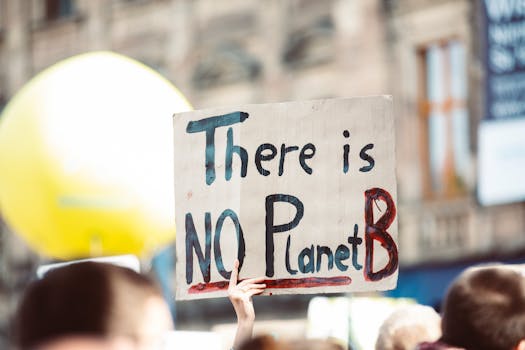
“
Understanding the Science Behind Climate Change and Its Impacts
Introduction to Climate Change
Climate change, also known as global warming, refers to the long-term rise in the average surface temperature of the Earth due to the increasing levels of greenhouse gases in the atmosphere. These gases, such as carbon dioxide, methane, and water vapor, trap heat from the sun and prevent it from being released back into space, leading to a warming effect on the planet.
The Causes of Climate Change
The main cause of climate change is the increasing levels of greenhouse gases in the atmosphere, primarily due to human activities such as burning fossil fuels, deforestation, and land-use changes. The burning of fossil fuels, such as coal, oil, and gas, releases large amounts of carbon dioxide into the atmosphere, while deforestation and land-use changes lead to the release of stored carbon into the atmosphere.
The Impacts of Climate Change
Climate change has far-reaching impacts on our environment, health, and economy. Some of the most significant effects include rising sea levels, more frequent and severe weather events, such as hurricanes and droughts, and changes in precipitation patterns. Climate change also affects human health, with warmer temperatures increasing the spread of diseases, heat stress, and other heat-related illnesses.
Environmental Impacts
Climate change has significant environmental impacts, including the loss of biodiversity, coral bleaching, and changes in ecosystems. Rising temperatures and changing precipitation patterns alter the distribution and abundance of plants and animals, leading to the loss of habitats and extinction of species.
Health Impacts
Climate change has significant health impacts, including the increased spread of diseases, heat stress, and other heat-related illnesses. Warmer temperatures also increase the levels of air pollutants, such as ozone and particulate matter, which can exacerbate respiratory diseases, such as asthma.
Economic Impacts
Climate change has significant economic impacts, including damage to infrastructure, increased costs for healthcare and social services, and loss of productivity. Climate-related disasters, such as hurricanes and wildfires, can also have significant economic impacts, with costs running into billions of dollars.
What Can We Do to Mitigate Climate Change?
There are many steps we can take to mitigate climate change, including reducing our carbon footprint, increasing energy efficiency, and transitioning to renewable energy sources. We can also support policies and technologies that promote sustainable development and reduce greenhouse gas emissions.
Conclusion
In conclusion, climate change is a pressing issue that requires immediate attention and action. By understanding the science behind climate change and its impacts, we can take steps to mitigate its effects and create a more sustainable future for ourselves and future generations.
Key Takeaways
- Climate change is caused by the increasing levels of greenhouse gases in the atmosphere, primarily due to human activities.
- Climate change has far-reaching impacts on our environment, health, and economy.
- We can mitigate climate change by reducing our carbon footprint, increasing energy efficiency, and transitioning to renewable energy sources.
Focus Keyword: Climate Change



